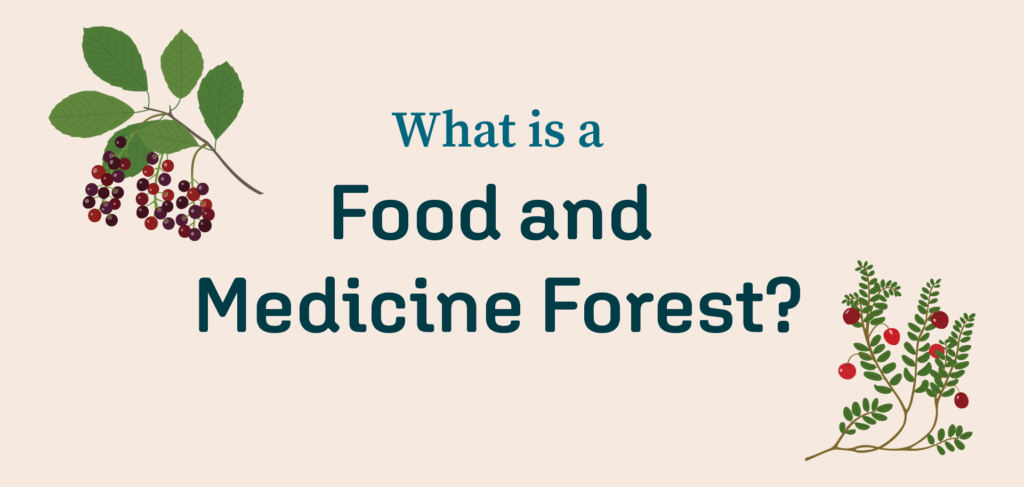Indigenous Peoples and Plants
For thousands of years Indigenous peoples have cared for and lived off the land. Local plant species provided food, medicine, material and were used in cultural rituals and traditions. This knowledge of plants and their uses has allowed Indigenous peoples to thrive in Canada’s diverse environments. However, the impacts of colonization stripped many Indigenous communities of their traditional ways of living on the land. Today, Project Forest is working with Indigenous leaders and community members to plant Food and Medicine Forests. Together, we are reintroducing food-bearing and medicinal plants and re-establishing food sovereignty.

A Food and Medicine Forest is a low-maintenance, nature-inspired agricultural system that provides food, medicine, greenspace for humans and habitat for insects and animals. Once established, it is a self-sustaining ecosystem, offering local opportunities for traditional food, land use and knowledge sharing for generations to come.
“Success to me means taking my grandkids and great grandkids to the forest we’re planting with Project Forest. We will walk on the trail, sit with our ancestors’ spirits, and pick berries. It’s a feeling of security, of knowing my family can take care of themselves.”
Dustin Twin, Council Member for Swan River First Nation
Project Forest works together with our Indigenous partners when selecting which species to plant. Traditional knowledge of what once grew on the land, and is no longer present, is valuable information when selecting what plants will do well in a given environment. We compile a species list of food-bearing and medicinal plants based on the community’s guidance, our silviculture expertise and site assessment.
Plants for Food and Medicine
Below is a list of species we often include in Food and Medicine Forests:
- Saskatoon
- Raspberry
- Wild rose
- Strawberry
- Common blueberry
- Honeysuckle
- Western mountain ash
- Bog cranberry
- Western choke cherry
And So Much More
Food and Medicine Forests provide a number of benefits to the community:
Local Food: Sustainable access to an established local food source able to feed community members with high quality and nutritious food.
Traditional Knowledge: Opportunities to re-establish traditional knowledge around food gathering and land-use.
Improved Environment: Cleaner air and water, improved soil, greenspace and increased habitat for insects and animals.
Economic Independence: Access to ongoing food-based economic opportunities and employment opportunities in the project establishment phase.